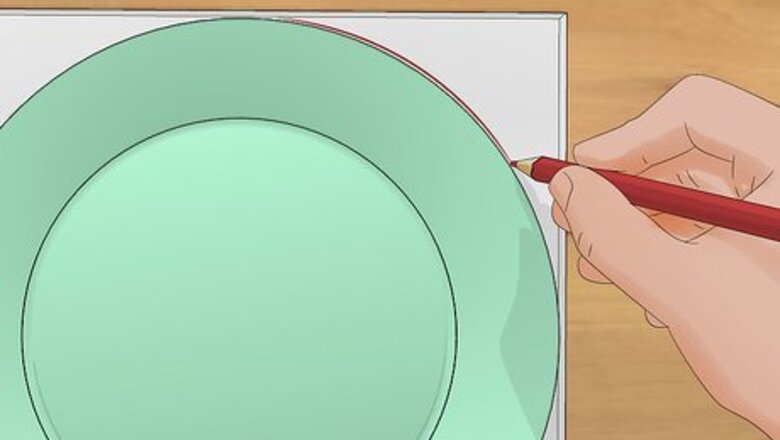
views
whereas a glass cutter can make smaller cuts. And if you have a lot of tile to trim, a wet saw is one of the easiest, quickest options.
Making Round Cuts with a Grinder
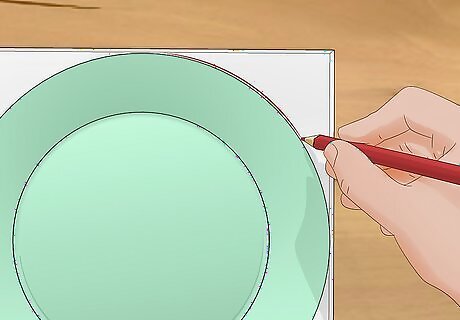
Draw the cut line on the front of the tile with a tile marker. The “front” of the tile is the side that’s smooth or glazed. If you have a circle template or rounded edge you can trace, your line will be more accurate. If you don’t have a tile marker, a lead pencil or crayon will work, too. For a dark piece of tile, lay a strip of masking tape on top of the tile where you want to cut and draw your line on top of the tape instead of the tile. This way you can see the line and it won’t blend into the tile.Cut Tiles Without a Tile Cutter Step 1Bullet2.jpg
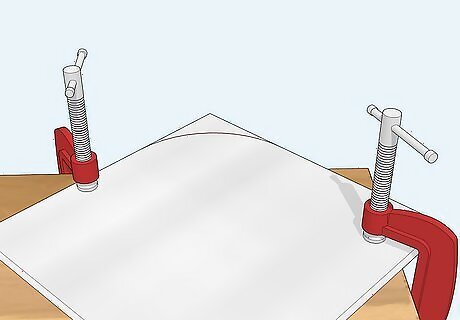
Secure the tile to a flat workbench using a C-clamp. The edge of the tile that you’ll be cutting can hang off the side of the bench just enough so that the cut mark is not on the bench. This prevents you from cutting into the bench itself. Loosen the clamp by twisting the top screw counterclockwise. Place the clamp vertically against the workbench so that the tile and bench are sandwiched between the ends of the clamp. Turn the screw clockwise until the clamp is tightly holding the tile in place. It’s best to do this outside because the process creates so much dust. You can use another type of clamp if you don’t have a C-clamp. You'll find a variety of types at a hardware store.
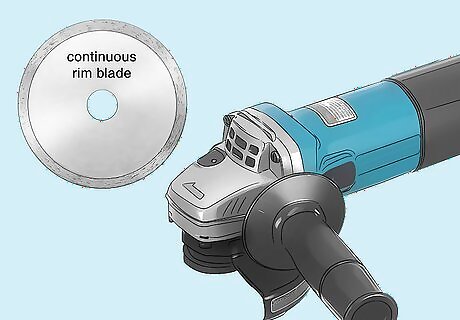
Get your grinder ready by putting in a continuous rim blade. Using this kind of blade instead of one that’s segmented makes for a much smoother cut. Locate the nut in the center of the blade disc and use a wrench to loosen it. Once you remove the nut, pop the old blade out and set the new one in position. Screw the nut tightly back on over the new blade. Keep the wheel guard down at all times for safety.Cut Tiles Without a Tile Cutter Step 3Bullet1.jpg
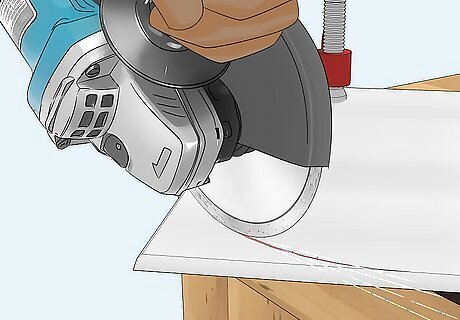
Cut through the tile with the grinder, making several passes. Slowly pull the angle grinder along your cut line. The first time you cut, you shouldn’t try to go all the way through the tile. Simply score it, then use that indent to guide your blade on your second pass for a deeper cut. Do as many rounds of cutting as necessary. Rushing the process will end up with jagged edges or an inaccurate cut.Cut Tiles Without a Tile Cutter Step 4Bullet1.jpg The harder the material of the tile, the more cuts you’ll have to make. Wear protective glasses and a dust mask when using an angle grinder as there can be a lot of debris in the air.
Using a Glass Cutter
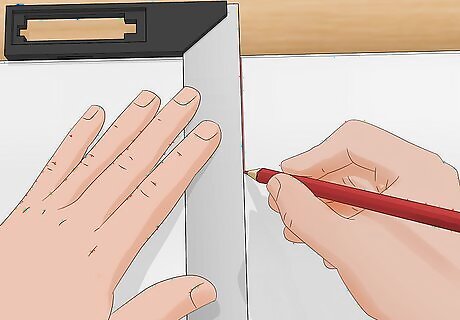
Draw a straight line for your cut using a square. You can use a specific tile marker or a crayon. Set the square about ⁄4 inch (0.64 cm) below the line, allowing room for your pencil or marker to line up perfectly with your measurement. You can buy a square at a hardware store or from an online retailer. If you don’t have a square, you can use anything that has a straight edge.
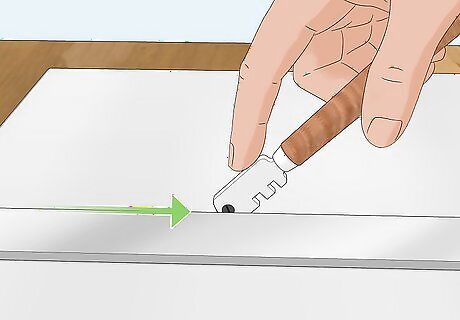
Score the tile along the cut line with the glass cutter. Firmly press down on the glass cutter as you drag it along your marked line. The idea is to just cut partially through the tile. You don’t want to push hard enough that you cut all the way to the bottom of your tile. Scoring should sound like a scratching or crackling noise. You can buy a glass cutter at a craft store or hardware store for around $10. It's a small hand tool with a sharp blade that cuts through glass tiles, other thin glass objects, and other hard materials when you press down and drag. Set a square along the cut line during this step to help guide the glass cutter.
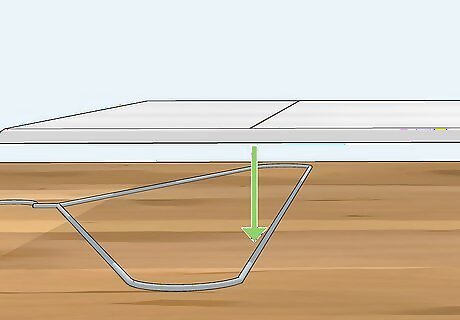
Place a wire clothes hanger underneath the scored cut on a flat surface. A sturdy surface like a workbench or thick piece of plywood is best. Line up the long wire part of the hanger with the scored line. If you don’t have a wire hanger, you can use a thick piece of regular wire. It just needs to be thin enough to run along the scored line.
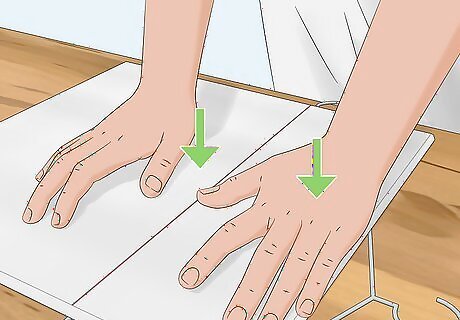
Break the tile along the score line by pressing down on each side. Use your palms to push gently to avoid splintering the tile, but use enough pressure to cleanly break the tile. The wire hanger elevates the tile slightly off the table so the sides of the tile have room to snap off. Wearing safety glasses when you break the tile will protect you from any pieces that might fly off. The tile should snap very easily. If it doesn’t, you may need to score it again. If you have a rough cut edge, you can sand it on a slab of concrete or a brick to smooth it out.
Trimming Tile with a Wet Saw
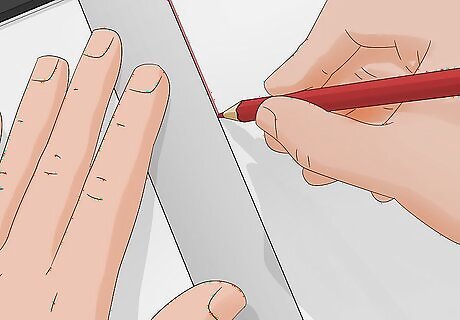
Mark where you want to make the cut on the tile using a square. A square will help you draw straight lines for cutting. Use a lead or grease pencil to make your marks. Don’t use a permanent marker. This will be very difficult to remove from the tile in the end.
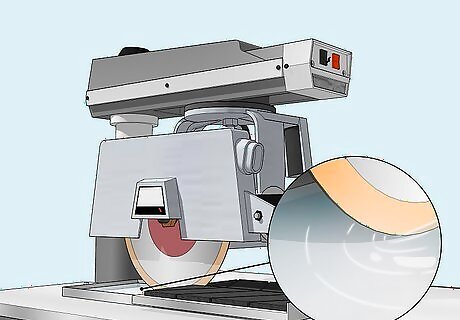
Fill the tray of the wet saw with water by turning on the water pump. The water will cool down the blade of the wet saw. Don’t fill the reservoir past the maximum line marked on the edge of the tray. You can cover the floor underneath the saw with a plastic drop cloth if you’re worried about it getting wet. There’s a chance water will spray or splash out of the reservoir.
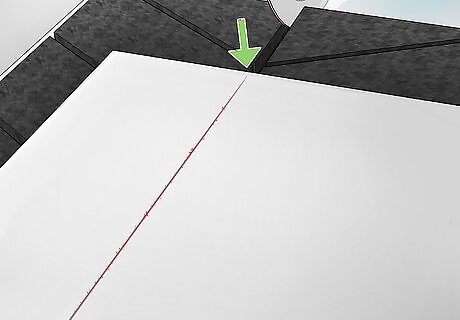
Set the tile on the saw, lining up the blade with the cut mark. Before turning on the saw, you may want to slide the tile about 1 inch (2.5 cm) back from the blade so it doesn’t start cutting immediately. Make sure the tile is completely flat on the surface of the saw. If you put the widest section of the tile between the blade and the fence, you’ll avoid having to get your hand too close to the blade.
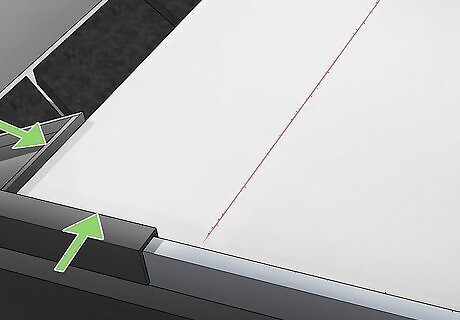
Lock the fence along the edge of the tile for a straight cut. The fence (also known as the lock plate) can be shifted from side to side along the saw to adjust for different sizes of tile. It's a long bar that sits on top of the saw's table next to the blade. Push it flush against the edge of your tile once you have it aligned with the blade, and lock it into place. To lock the fence, there should be a small lever on the side of the fence. Pull it out towards you to unlock it and push it in against the saw to lock it. You can lock the fence on either the right or left side of the blade. It depends on which is most comfortable for you.
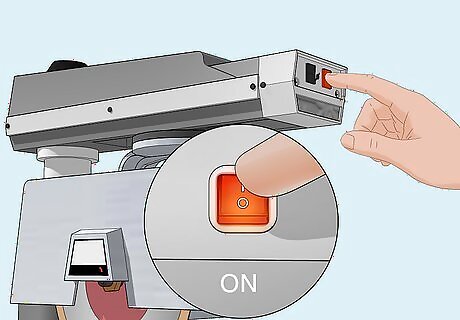
Turn on the wet saw by pressing the button on the side of saw. The “on” switch may be a green button. Wait for the water to cover the blade before you start cutting. Wear safety glasses and gloves to protect yourself from flying debris. Always leave the protective plastic covering over the blade while you’re cutting.
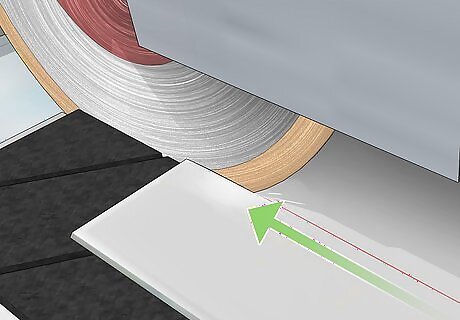
Push the tile gently along the fence into the blade. You shouldn’t have to force the tile through the blade. You’re simply guiding it along using both hands. When you get near the end, firmly press the 2 halves of the tile together as you push it through the blade so that the tile doesn’t break before the cut is made. Make any necessary adjustments to the tile while you guide it. If the blade starts straying from your cut mark, gently push the tile back into place. Harder or thicker tiles should be pushed through at a slower rate. You’ll know you’re pushing it too fast if you hear the blade slow down. Never take your eyes off the blade as you cut. Looking away for even just a second is very dangerous. Keep your hands as far away from the blade as possible. If you need to, you can use a piece of scrap wood to push the tile through the blade.
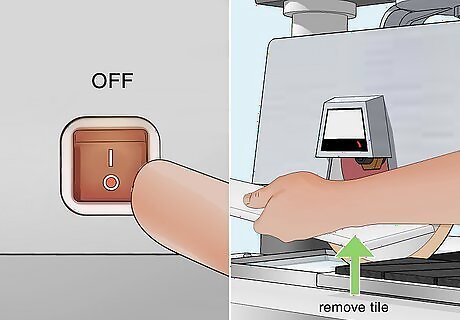
Turn off the saw before removing the tile from the table. The “off” switch is typically a red button on the side of the saw. Wait until the blade has completely stopped rotating before you grab the tile. Make sure the tile is free of the blade before you reach over to turn off the saw. Otherwise, it could go shooting off the table. After you unplug the saw, you should use a damp sponge to wipe it down and remove any debris.




















Comments
0 comment